Facing Fears: Conquering Colorado On A Downhill Mountain Biking Adventure
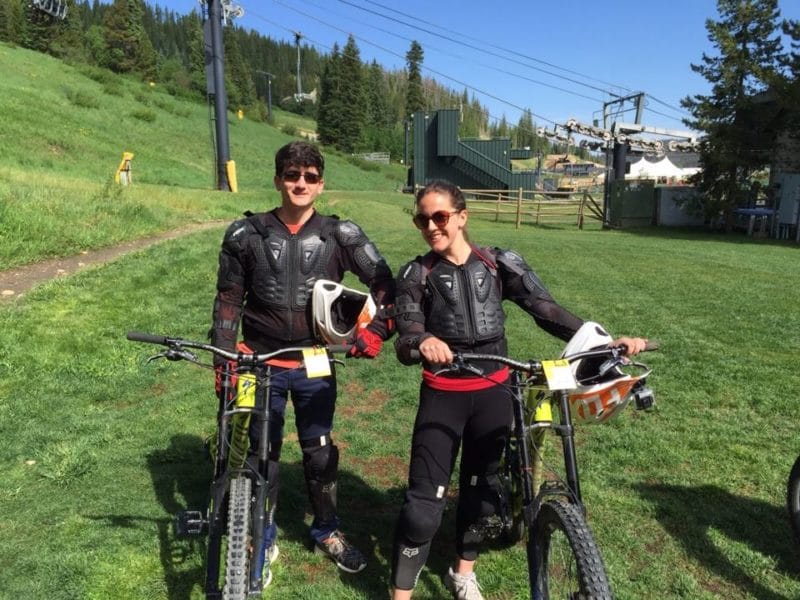
Jonathan of Travel Food Love and I before embarking on a downhill mountain biking adventure
“Does everyone know where the bike’s back break is?”
I breathe a sigh of relief. So far my introductory course to downhill mountain biking at Winter Park Resort’s Trestle Bike Park in Colorado is manageable.
Despite knowing the answers to the preliminary questions, however, my heart is beating out of its chest and my blood pressure feels like one of those strong man carnival games where you pound a puck with a mallet to hit the top bell.
I’m out of breath and we haven’t even left the bike shop yet.
The full-face helmet, knee and shin guards, gloves, and full-body padding warn me the day is about to get more adventurous … by a lot.
Despite riding my bike almost daily around NYC and exploring trails around the USA like Idaho’s Route of the Hiawatha trail, downhill mountain biking has always been a fear of mine. It just looks so out of control, with so many possibilities for what could go wrong:
Falling off a mountain, bashing into a tree, tumbling over the handlebars, simply looking like an idiot.
Deep breathing and lots of water help calm me down, and I vow not to let myself back out.
Funny enough, I didn’t sign up for the lesson because I thought I would be the best — although one can hope; instead, I booked this excursion because I wanted to face a fear. I wanted to use travel for one of its most powerful purposes: growth.
My previous days traveling around Colorado’s Grand County had been full of Rocky Mountain hiking, high altitude kayaking and dude ranch barbecuing — all things I loved, and knew I would love when deciding to do them.
Downhill mountain biking was something that could very well bring me to tears, break my bones or just be something I hated. It could also be something I excelled at, made it through with a smile and absolutely loved. We would soon find out.
Worst came to worst, I would leave with some gnarly scars and a great story to tell. See, I like to think positive.
Downhill Biking: Learning The Basics
After a chat about safety and how to properly downhill bike, our group of eight, six students and two instructors, Christy and John, spend some time on the bunny hill practicing our strong stance — standing tall without locked knees, arms wide on the bars with elbows out, body slightly back, and pedals flat on an even plane.
We also talk about our experience with downhill biking. Let’s just say my title of “urban commuter cyclist” wasn’t going to get me any street mountain cred with these folks.
I feel pretty good about my stance, although will every passing moment I feel myself getting farther from the bunny hill and closer to the day’s terrifying adventure.
Which begins with the lift.
I actually enjoy heights, and thus enjoy chairlifts. While I’ve taken chairlifts skiing, the downhill bike chairlifts alternate bike and human chairs.
To get my bike on, I follow the chair as it drifts away from me and run my bike up a metal ramp slot until both wheels are secure.
As I use all my strength — which I’ll admit isn’t much — to get the bike into the slot the front wheel awkwardly turns away from where it needs to go. Luckily, John is there to grab the bike and fix it.
Shake it off, Jessie.
The next chairlift picks me up, and I forget fear during the 10-minute flight, views of lodgepole pines, Parry Peak (which looks oddly like a catcher’s mitt), and the Continental Divide captivating my mind.
When I get off the lift, I’m standing at 10,500 feet (3,200 meters).
It’s from this high altitude that I’ll begin downhill biking.
The Adventure Begins
Trestle Bike Park features over 40 miles (64 kilometers) of mountain bike trails, although there is only one green (beginner) trail. Like skiing, trails are labeled by colors — green, blue and black, along with special blue blacks and double blacks — with much of the park’s terrain designated for advanced riders.
The single-track green trail I’d be embarking on, called Green World, is about 5.5 miles (nine kilometers) long, with plenty of action along the way to satisfy any adrenaline junkie.
John leads while Christy pulls up the rear, with students cycling over a downhill wooden rollover — I have a bit of a panic attack with this — as well as rough and rolling terrain.
I’m not used to the bumps and rocks, and find myself staring down at the ground as well as at the many pines I don’t want to crash into.
I can’t stress enough how bad this is. When downhill mountain biking you need to look at the path ahead, focusing on where you want the bike to go.
Your bike tends to follow your eyes, so if you’re staring at the scary rocks and cliff ledges you don’t want to interact with you may find yourself doing just that.
While the instructors have told us this, it’s much easier said than done. Especially when we get to the trail turns.
We’re told to look ahead and to gently brake before the turn — not during or things can get hairy. Braking is possibly one of the most important skills to master for downhill biking.
It should be gentle with one finger, assuming your bike has good brakes, which it should. Brake too hard with your rear break — the one on the right (in the US, different for motorcycles) — and you’ll just damage the bike and the trail.
Brake too hard with your front brake and you’ll likely find yourself flipped over the handlebars when the bike halts to a standstill. It’s truly an art to master.
And I do, albeit shakily, and not without yelping like a wounded animal. I’m sweating so much from anxiety I need to remove my sunglasses and pour water on my face.
I’ve skydived, bungee jumped, zip-lined, rock climbed, swam cage-less with hammerheads and gone canyoning without a second thought; but, for some reason, this downhill biking seriously freaks me out.
There’s something about being in control of your own life using a skill you’re not sure you possess that’s seriously terrifying.
The thing is, I’ve now gone up the chairlift and am in the middle of the woods, on a downhill single-track trail that still has five miles to go. There’s no turning back. I’ve either got to suck it up, believe in myself and get on with it, or ask to be air rescued.
Luckily, I’ve got a little too much pride for the latter.
When Being The Worst Is A Good Thing
Despite my worries of being the worst in the group, it’s soon something I really just have to own, especially when John splits us up into two groups — one of five, and one of one.
Me.
He’s trying so hard to be nice about the fact I’m 10 times slower than everyone else that I have to laugh.
“It’s okay, I’m fine with being the worst,” I laugh. “I’m glad for the one-on-one practice.”
The rest of the group is supportive, wishing me luck and telling me I’m doing great. Soon, they’re on their way and I’m left alone with my awesome instructor for the day, Christy.
I’m not sure why I was so afraid of being the worst, as it’s actually landed me a private lesson. I already feel more comfortable simply not having other eyes on me.
I’m still a bit shaky, and Christy tells me that I’m doing everything right, technically, but that I need to relax. I’m rigid and fearful, and that alone is what is affecting my performance.
My confidence in my abilities doesn’t come quickly or easily; however, after mile two, my heart has stopped beating out of my ears and I’m actually having fun, silently reciting my favorite inspiring mountain quotes to pump myself up.
And I’m downhill biking! I’m really doing it.
Finding My Confidence
Certain sections are harder than others, and we go over numerous segments with wide sharp turns, steep declines, huff-inducing inclines and huge rocks that just that morning I never would have believed I could do.
At one point we reach a particularly precious looking turn that I just can’t bring myself to do — literally stopping short at the top each time I try — and end up walking my bike around it, instantly feeling angry at myself for giving up.
“There’s another one coming up that’s slightly different than that one, so you’ll have a chance to try again,” says Christy.
When we get to the second turn, I give myself a head start with pedaling, take a deep breath, utter a “you can do this” mantra and … go.
I easily make it around the scary curve unscathed and with a smile.
Christy smirks, “Remember how I said that turn was slightly different? It was steeper and longer. I just didn’t want to freak you out. You did it!”
After that my confidence shoots through the roof. I feel invincible, simply because I successfully tackled something I wasn’t quite sure I could master.
The last leg of the trail introduces me to rollers, essentially a pattern of up and downhill slopes. For this, Christy teaches me how to “pump” the rollers, which means moving your body up and down in tune with the slopes, providing speed and smoothness for the ride. While I wouldn’t say I mastered them, I feel like I got the hang of them to the point where I was proud.
The trail ends with level mountain trails, until the very end where there’s a long downward slope where I think I might bite the dust. But, I don’t. And I finish in one piece.
I could have easily spent the day at Winter Park Resort riding the alpine slide or doing the maze — which I do, and are awesome — but I also wanted an experience that would take me out of my comfort zone and help me grow as a person.
Downhill biking at Trestle Bike Park ended up being one of the most epic bike rides of my life.
It provided exactly that in an active and fun way, and introduced me to something I wasn’t great at when I started, but feel I could somewhat master with more practice.
Looks like I have a new activity to incorporate into my upcoming travels.
Have you ever tried downhill mountain biking in Colorado?
My trip was sponsored by Visit Colorado. I was not required to write this post nor was I compensated for it. As always, all opinions are my own, and all writings are based on my personal experiences in the destination.
Logistics:
Getting There & Around: Travelers can fly into Denver International Airport. From here, it’s about a two-hour drive to Winter Park Resort. If you just plan on spending time at the resort and exploring their mountain sports and onsite rides and restaurants, there’s no need for a car, especially in winter when their free shuttle takes you around town, as well; however, summer travelers wanting to explore beyond the resort or those wanting to do a longer trip should rent a car.
I recommend Home James Transportation for a shuttle service, and Avis for car rentals. For the trip between Denver International Airport and Winter Park Resort the cost was $69.
Health: Because Colorado is a high altitude state, make sure to hydrate before and during your trip. Eight glasses is not enough, and altitude sickness can creep up on you without warning.
Travel Insurance: I recommend taking out a plan with Allianz Global Assistance.
Language: English
Currency: US Dollars
Fun Fact: Charles Lindbergh and his wife, author Anne Morrow, spent time in Grand County with friend, Harry Knight, whose place is now covered by Granby Reservoir.
Bonus Colorado Adventure Resources:
Epic Adventures In Colorado’s Grand County
5 Ways To Experience Aspen Beyond Skiing
Conquering My Fear Of Heights At Portland Creek Canyon, Colorado
These Photos Will Make You Want To Hike Vail Mountain Right Now

Hi, I’m Jessie on a journey!
I'm a conscious solo traveler on a mission to take you beyond the guidebook to inspire you to live your best life through travel. Come join me!
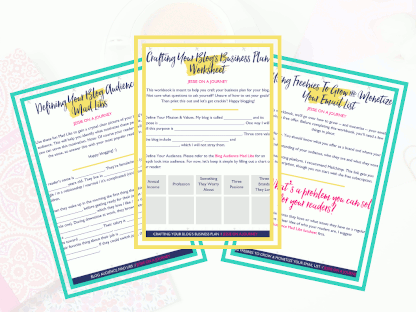
Want to live your best life through travel?
Subscribe for FREE access to my library of fun blogging worksheets and learn how to get paid to travel more!

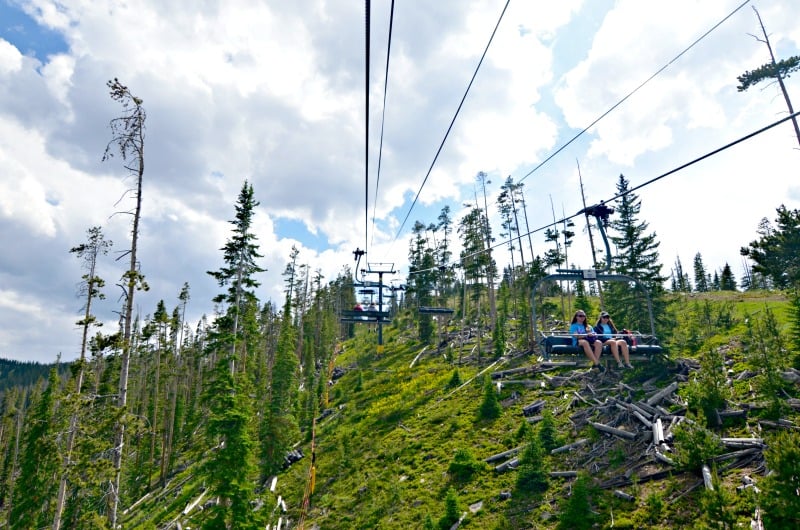
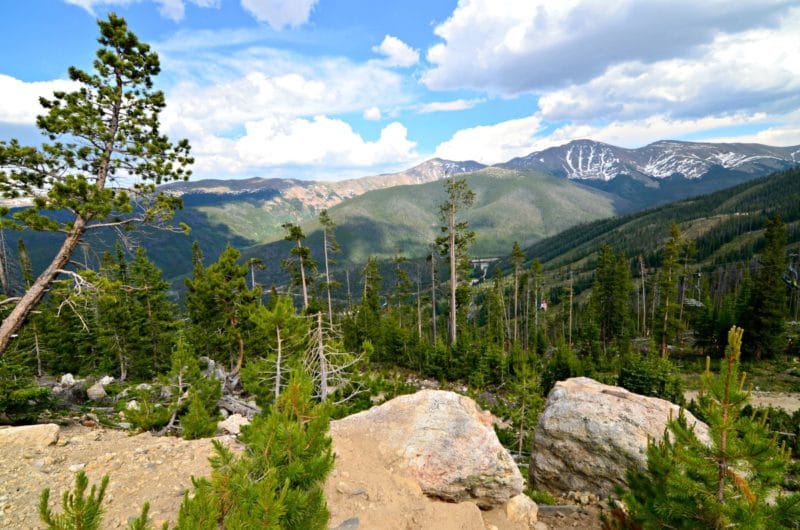

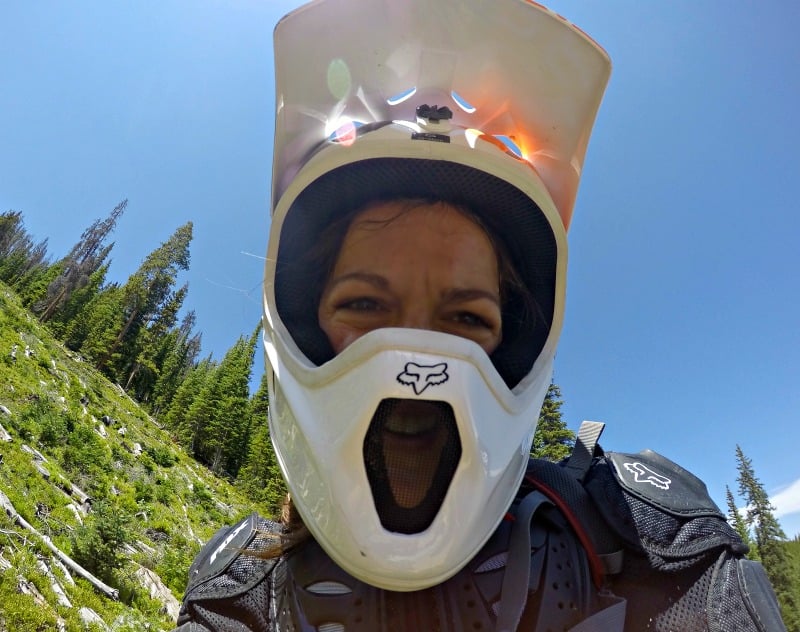
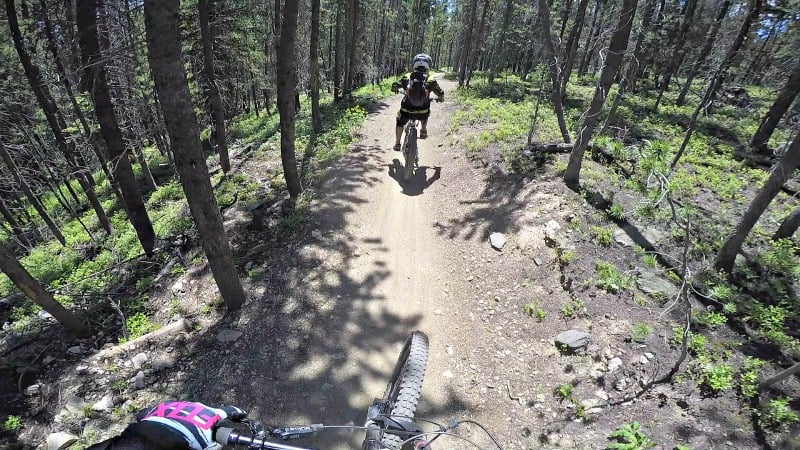
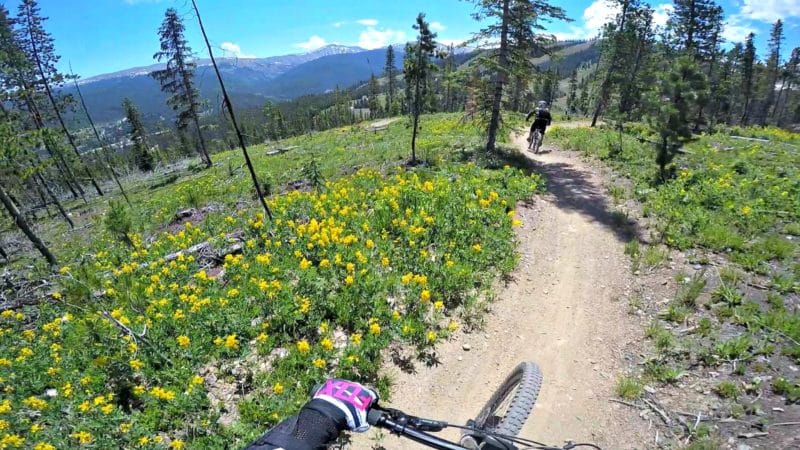
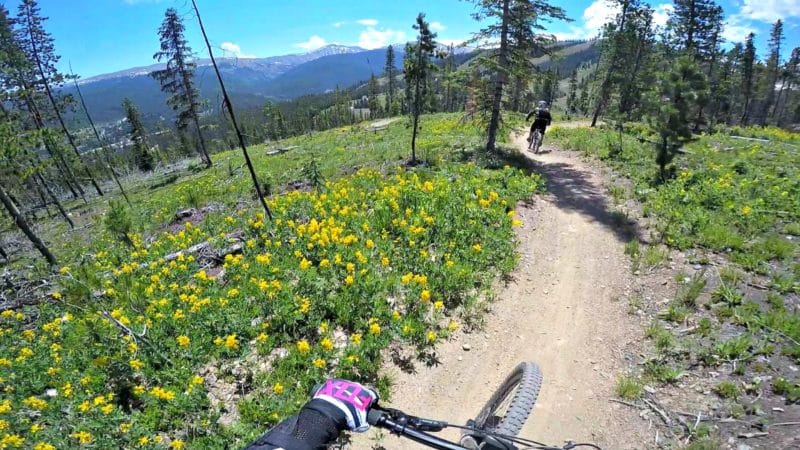
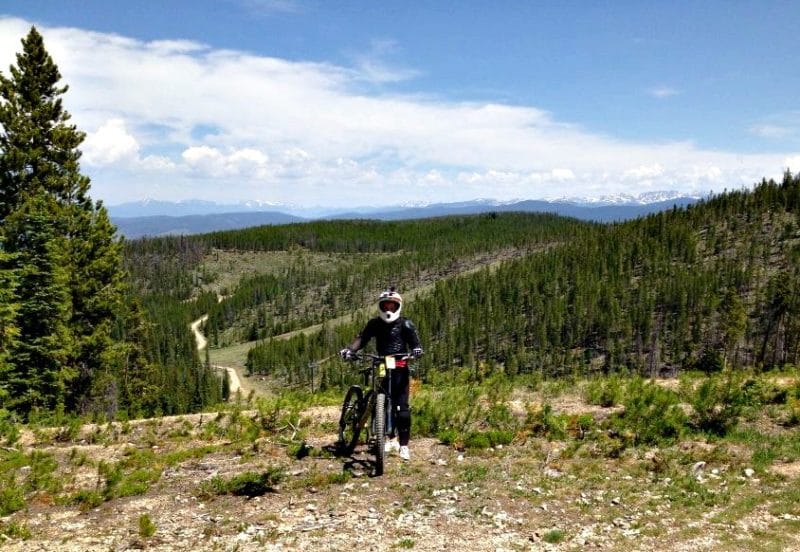
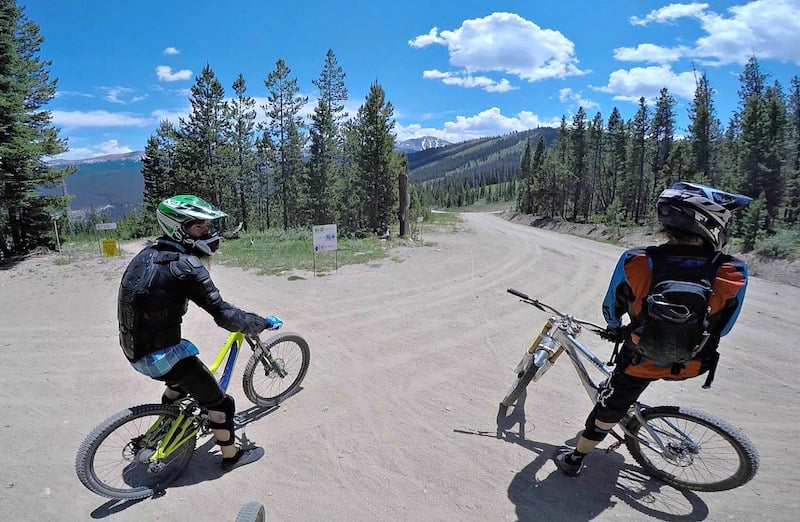
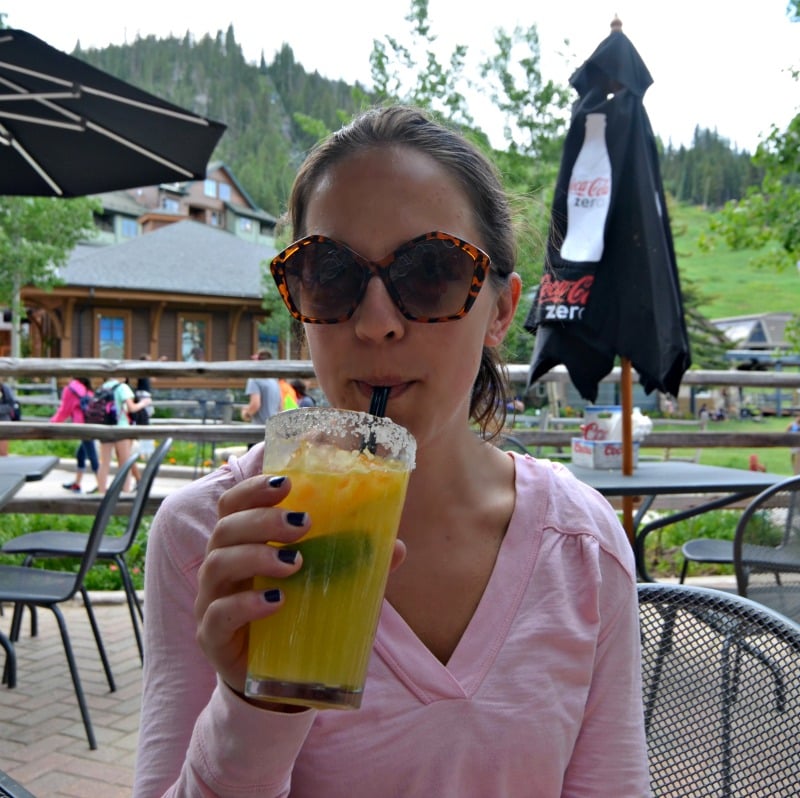

Hi, great article! Just wanted to mention that I think you mean “Does everyone know where the bike’s back brake is?”. And possibly another break/brake mixup later in the text. I was a little confused at first! 🙂 Keep riding!
Thank you!
Nice photos! What a fun outing. There’s a place out here that has combined the ski lift in the summer with mountain bikes too and it’s getting very popular! Thanks for the info!
Haha, could of been fun to see how that went down with the guide that was stoned!